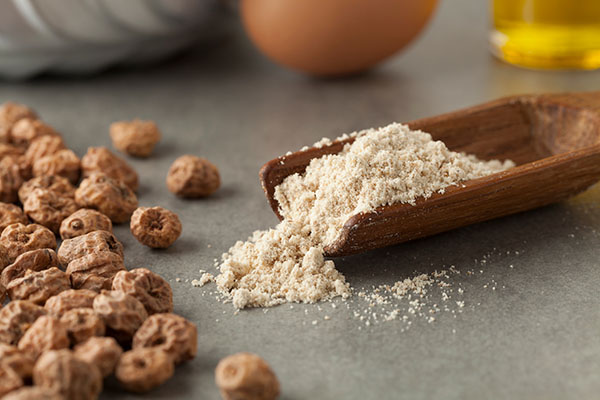
Advertisement
Kale is a popular superfood among health enthusiasts. It’s used to make salads, smoothies and other healthy dishes and beverages.
But did you know that collard greens, which are full of vitamin K and commonly used in southern U.S. cooking, are just as good as kale?
Collard greens are loose leaf greens. Fun fact: They’re related to kale and spring greens! However, collard greens have thick leaves with a slightly bitter taste. Collard greens are similar in texture to both cabbage and kale.
Collard greens are rich in calcium and vitamins A, B9 (folate) and C. These leafy greens are also a great source of vitamin K. A cup (190 g) of cooked collard greens packs a whopping 1,045 percent of the daily value (DV) for vitamin K, a nutrient with a role in blood clotting.
It’s time to consider collard greens as a veggie that you will want to add to your side dish (or even main meal) rotation, as it is not only bursting with flavor but chock-full of nutritious health benefits as well!
While it doesn’t have kale’s star power in the superfood world, collard greens can actually rival and even outperform the former in some ways. For example, compared to kale, collard greens have 18 percent more calcium per serving and twice the amount of protein and iron!
Detailed below are some of the many health benefits that a steaming, savory and delicious plate of collard greens can bring your body.
Collard greens are rich in vitamin K, a nutrient that contributes to longevity
So, what’s the big deal about vitamin K? Consider your lifespan, for one thing.
Data from a 2014 study on vitamin K has determined that consuming enough vitamin K can help you live longer. For the study, researchers observed over 7,000 participants at high risk for heart disease. According to the findings, the volunteers with the highest vitamin K intake were at least 36% less likely to die from any cause, unlike those with the lowest intake of the vitamin.
This is great news for those who love a delicious serving of collard greens, which are full of vitamin K! Additionally, they are rich in carotenoids and calcium that are also good for you.
Collard greens can help lower your cholesterol
The science is in! One study demonstrated that steamed collard greens were superior to kale, cabbage, Brussels sprouts and broccoli in binding bile acids in the digestive tract.
Why is this important? Because this process aids in excreting bile acids from the body, and this, in turn, lowers the body’s level of cholesterol (the bile acids are made from cholesterol, so this makes sense).
Healthy tip: Steaming the collards improves this process over raw collards.
Collard greens have amazing cancer-fighting properties
Packed with phytonutrients, such as di-indolyl-methane and sulforaphane, proven to have anti-cancer properties, collard greens help protect your body from breast, cervical, colon, ovarian, and prostate cancers. These phytonutrients have shown that they inhibit cancer cell growth and also have cytotoxic properties against cancer cells.
Additionally, there are four glucosinolates (sulfur-containing chemicals) found in collard greens: glucoraphanin, sinigrin, gluconasturtiin and glucotropeolin. Translated into English for those who aren’t familiar with chemical compounds, this means is these substances can be converted into isothiocyanate that aids in reducing cancer risk by assisting in your natural anti-inflammatory systems. And anti-inflammatory is what you need when looking for the best foods that lower your cancer risk.
Cooking with collard greens
Collard greens can be used to make savory side dishes, soups and stews. You can also saute the leafy greens with onions and butter.
Collard greens carry a lot of grit in them, so wash the leafy greens thoroughly before cooking.
When you’re ready to cook, remove the stems first. Fold the leaves in half lengthwise, then trim the stems off with a knife. You can also tear the leaves away from the stems.
Fill up the sink with cold water then add the leaves. Swish the collard greens around to loosen the grit and make them settle on the bottom of the sink. Drain the sink and refill and repeat until no more grit settles on the bottom.
Once the leaves are clean, chop them up into 1-inch pieces. Simmer the collard greens at a temperature range of 180 F to 205 F in enough water to cover them, then add a smoked ham hock or pork cheek, smoked turkey wing or turkey neck for a savory dish. Don’t let the water reach a full rolling boil.
In another pot, saute some onion and garlic. Add a sliced serrano pepper if you want.
The collard greens should be done in about 30 to 60 minutes. Remove the ham hock, or your choice of meat, pull off the meat from the bone, chop it up then return it to the pot.
Once you’re done cooking, you’ll be left with a delicious cooking liquid called “pot liquor.” Set the pot liquor aside and eat it with homemade cornbread.
Boost your vitamin K intake and lower your cholesterol by eating nutrient-rich collard greens.
Sources include:
Advertisements







